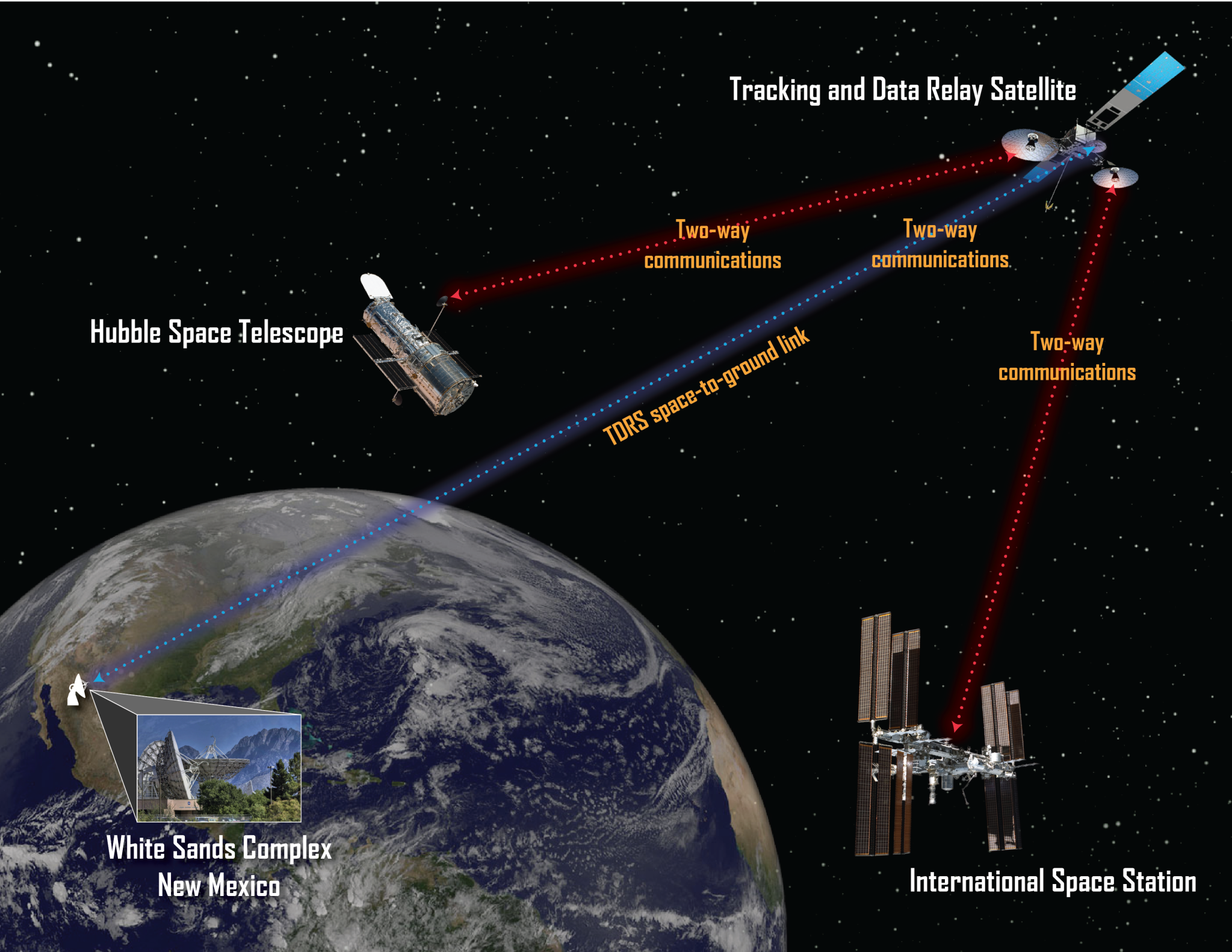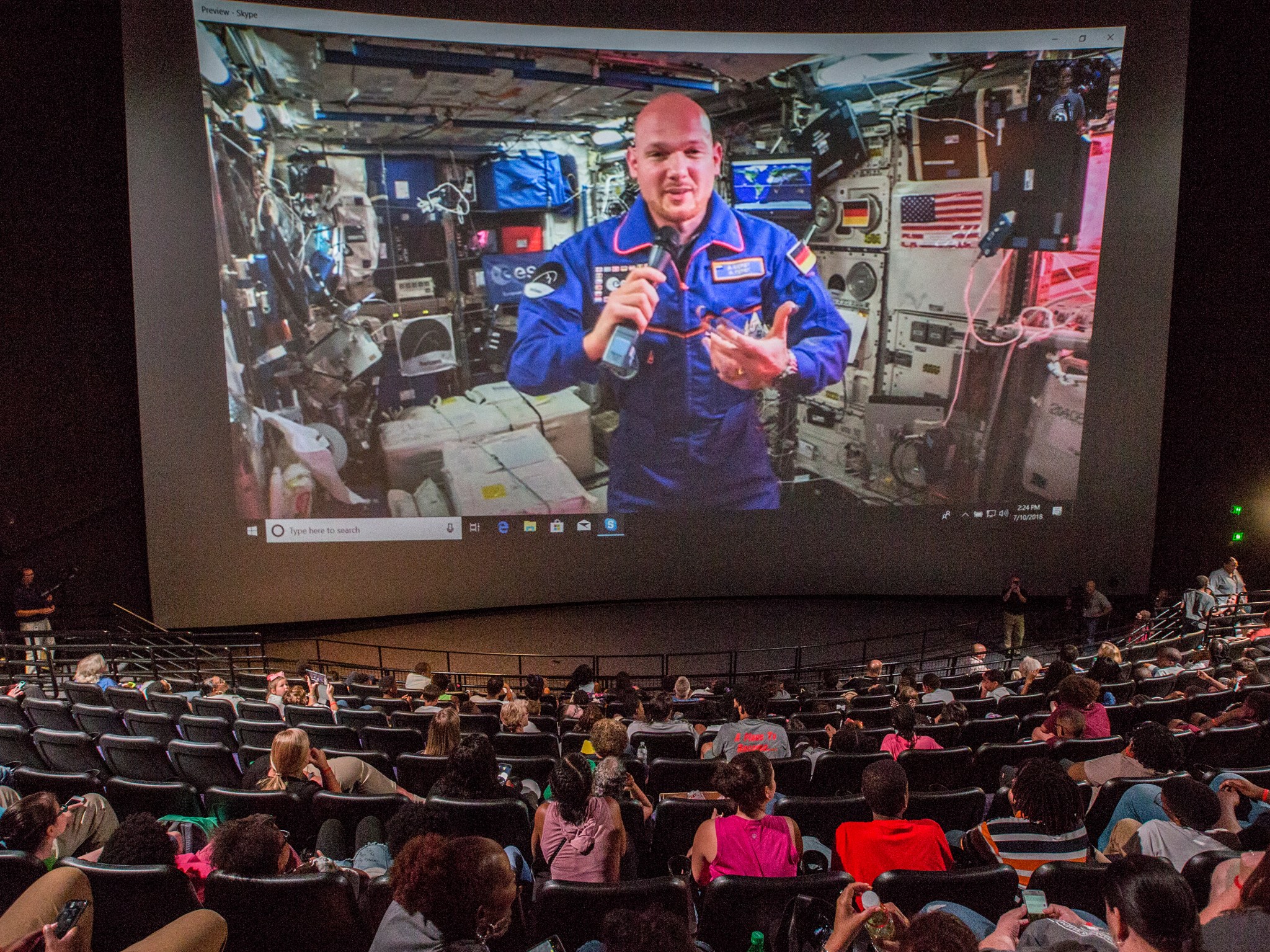On Nov. 2, 2000, the first crew to live on the International Space Station arrived. Humans have continued to live and work there ever since. Reliable communications between the crew on the space station and the support team on Earth helps make it possible. Space communications is crucial for most astronaut activities, from performing spacewalks to conducting experiments to calling friends and family. NASA stays in contact with astronauts orbiting more than 250 miles above Earth with a network of communications satellites and ground-based antennas. Together, they make up NASA’s Space Network.
A constellation of Tracking and Data Relay Satellites (TDRS) form the space-based portion of the network. They work like cell phone towers in space. TDRS are located in geosynchronous orbit more than 22,000 miles above Earth, which lets the space station contact one of the satellites from anywhere in its orbit. As the communications satellites travel around Earth, they stay above the same relative point on the ground as the planet rotates.
TDRS handles voice, video and science data in real time. If an astronaut on the space station wants to transmit data to Mission Control at NASA’s Johnson Space Center in Houston, Texas, the station’s onboard computer first converts the data into a radio frequency signal. An antenna on the station transmits the signal to a TDRS. The TDRS then routes the signal to NASA’s White Sands Complex in White Sands, New Mexico. Landlines send the signal to Houston, and computer systems on the ground turn the radio signal back into readable data. If Mission Control wants to send data back, the process repeats in the other direction, transmitting from White Sands to TDRS to the space station. All of this happens in milliseconds so that there is no noticeable delay in communication.
NASA uses this same communications system for in-flight education downlinks. TDRS and the Space Network allow astronauts in space to answer questions from students across the United States through video and voice calls.
The space station plays an important role in furthering our knowledge about a variety of subjects. The unique environment of low-Earth orbit allows astronauts to conduct experiments, which provide valuable insight in the fields of physics, biology, astronomy, meteorology and more. The Space Network delivers this one-of-a-kind science data back to Earth.
Before the Space Network, NASA astronauts and spacecraft could only communicate with the support team on Earth when they were in view of an antenna on the ground. That allowed only for communications less than 15 minutes every hour and a half. Imagine if our cell phones worked that way. It would be difficult to stay in contact with family and friends or respond to important messages. The Space Network provides near continuous communications coverage every single day.
NASA’s Goddard Space Flight Center in Greenbelt, Maryland, manages and operates the Space Network. NASA’s Space Communications and Navigation (SCaN) program office, part of the Human Exploration and Operations Mission Directorate at the agency’s headquarters in Washington, provides strategic and programmatic oversight for the network.



























